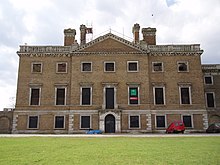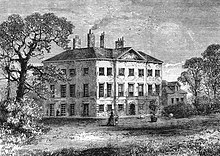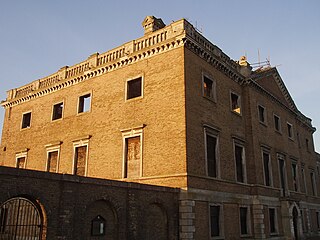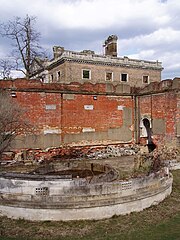
Chingford is a town in east London, England, within the London Borough of Waltham Forest. The centre of Chingford is 9.2 miles (14.8 km) north-east of Charing Cross, with Waltham Abbey to the north, Woodford Green and Buckhurst Hill to the east, Walthamstow to the south, and Edmonton and Enfield to the west.
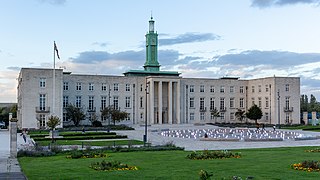
Walthamstow is a large town in the London Borough of Waltham Forest, around 7+1⁄2 miles (12 km) northeast of Central London. The town borders Chingford to the north, Snaresbrook and South Woodford to the east, Leyton and Leytonstone to the south, and Tottenham to the west. At the 2011 census, the town had a population of approximately 109,424.

The London Borough of Waltham Forest is an outer London borough formed in 1965 from the merger of the municipal boroughs of Leyton, Walthamstow and Chingford.

The Abbey Church of Waltham Holy Cross and St Lawrence, also known as Waltham Abbey, is the parish church of the town of Waltham Abbey, Essex, England. It has been a place of worship since the 7th century. The present building dates mainly from the early 12th century and is an example of Norman architecture. To the east of the existing church are traces of an enormous eastward enlargement of the building, begun following the re-foundation of the abbey in 1177. In the Late Middle Ages, Waltham was one of the largest church buildings in England and a major site of pilgrimage; in 1540 it was the last religious community to be closed during the Dissolution of the Monasteries. It is still an active parish church for the town.

Leytonstone is an area in East London, England, within the London Borough of Waltham Forest. It adjoins Wanstead to the north-east, Forest Gate to the south-east, Stratford to the south-west, Leyton to the west, and Walthamstow to the north-west, and is 7 miles (11 km) north-east of Charing Cross.

Loughton is a town and civil parish in the Epping Forest District of Essex, within the metropolitan and urban area of London, England. Situated 12 miles (19 km) north-east of Charing Cross, the town borders Waltham Abbey, Theydon Bois, Chigwell, Chingford, and Buckhurst Hill.

Epping Forest District is a local government district in Essex, England. It is named after the ancient woodland of Epping Forest, a large part of which lies within the district. The council is based in the town of Epping. The district also includes the towns of Loughton, Waltham Abbey, Chigwell, Buckhurst Hill, as well as rural areas. The district is situated in the west of the county, bordering north-eastern Greater London.

Waltham Abbey is a town and civil parish in the Epping Forest District of Essex, within the metropolitan and urban area of London, England, 13.5 miles (21.7 km) north-east of Charing Cross. It lies on the Greenwich Meridian, between the River Lea in the west and Epping Forest in the east, with large sections forming part of the Metropolitan Green Belt.

Tupholme is a village in the East Lindsey district of Lincolnshire, England. It is situated 11 miles (18 km) east from Lincoln, and is the site of the ruined Tupholme Abbey on the road between Horncastle and Bardney. The population is included in the civil parish of Bucknall.

Whipps Cross is an area of the districts of Leytonstone and Walthamstow in the London Borough of Waltham Forest in London, England. It is most famous for Whipps Cross University Hospital.

Nazeing is a village and parish in Essex, England. Within the parish are the separate settlements of Upper Nazeing, Middle Nazeing, and Lower Nazeing. The Prime Meridian passes to the west of Lower Nazeing.
Loughton is a town in the county of Essex in England. The first settlement can be traced back to 2,500 years ago, but the earliest records of the modern-day site of Loughton are from the Anglo-Saxon era of English history, when it was known as Lukintone. After the Norman conquest it became part of the estate of Waltham Abbey and is mentioned in the Domesday Book as Lochintuna. It was during the 17th century, however, when Loughton began to grow significantly as a coaching stop on the newly created main route to Cambridge and East Anglia. With good transport links and proximity to both London and also Epping Forest and the countryside, it became a popular location for aristocratic and wealthy Londoners to have a home.
Debden is a suburb in the civil parish of Loughton, in the Epping Forest district of Essex, England. It takes its name from the ancient manor of Debden, which lay at its northern end. The area is predominantly residential, but is also the location of Epping Forest College, East 15 Acting School and the De La Rue printing works. It is one of a limited number of places outside Greater London to be served by the London Underground.

Upshire is a village and area of Waltham Abbey in the Epping Forest District of Essex, England. The centre of the village is on Horseshoe Hill, on which is The Horseshoe public house, and the church of St Thomas, a Grade II* listed building in Arts and Crafts style dating from 1902. Areas of built-up Waltham Abbey around Upshire Road and Pick Hill, most of which was developed in the latter half of the 20th century including northern parts of the Ninefields Estate, are also considered part of Upshire.

Killruddery House is a large country house on the southern outskirts of Bray in County Wicklow, Ireland, approximately 20 km (12 mi) south of Dublin. The present structure is a south facing multi-bay mansion, originally dating from the 17th century, but remodelled and extended in 1820 in the Elizabethan style. It is constructed as variously single, two, three and four storeys in the shape of an irregular quadrangle enclosing a courtyard. To the north an office wing incorporates the 17th-century portion and to the south and west is a large domed conservatory, the orangery, designed by William Burn in about the 1850s. The house sits within a large landscaped demesne which features a pair of 550-foot long parallel reflecting pools on the south lawn.
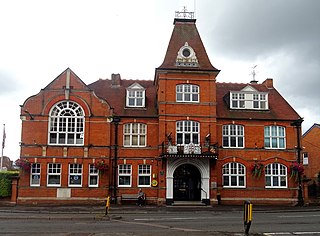
Waltham Abbey Town Hall is a municipal facility on Highbridge Street in Waltham Abbey, Essex. It is a locally listed building.
Edward Conyers was an English barrister and Tory politician who sat in the House of Commons between 1725 and 1741.

Coopersale, also termed Coopersale Common, is a village in the civil parish of Epping, within the Epping Forest District of Essex, England. In 2018 it had an estimated population of 1019.

Loughton Hall is a large house in Rectory Lane, Loughton, Essex. The architect was William Eden Nesfield, and it is grade II listed with Historic England. It is now a 33-bedroom residential care home for elderly people.
Hawkwood is a 25-acre estate in North Chingford, London Borough of Waltham Forest, North East London, England. It is about nine miles from central London, in the fertile Lea Valley on the western edge of Epping Forest. In the 19th century it formed the grounds of a large Elizabethan-style Victorian mansion, seat of Richard Hodgson, lord of Chingford St. Pauls. The mansion became derelict after bomb damage in 1944 and was demolished in 1951. Part of the site is now a nature reserve, a special school has been built on another part, and a large part of the site is being used by OrganicLea, a workers' cooperative growing and selling food and providing horticultural training.
